Snatch Balance: How To, Benefits & Alternatives
Author:
Unlock your full potential by engaging with our experts and community! Have questions about your fitness journey or looking for expert advice on weightlifting techniques? Don’t hesitate — leave a comment below and Oleksiy Torokhtiy will provide a personalized answer and insights to help you reach your goals.
Torokhtiy is reader-supported. Some links are affiliate links, and we may earn a commission at no extra cost to you. See our disclosure page for details.
Strength, balance, and agility all in one? Yes, please!
That’s what you get with the snatch balance – a powerhouse that can be an extra challenge to an already established routine or a way to refine your technique.
It’s not just for you advanced people, beginners can benefit from it, too. Providing they learn the form, of course.
We’ll go over how do the snatch balance, what mistakes to avoid, how to include it into your routine, some variations, alternatives… Basically, everything you would ever want to know.
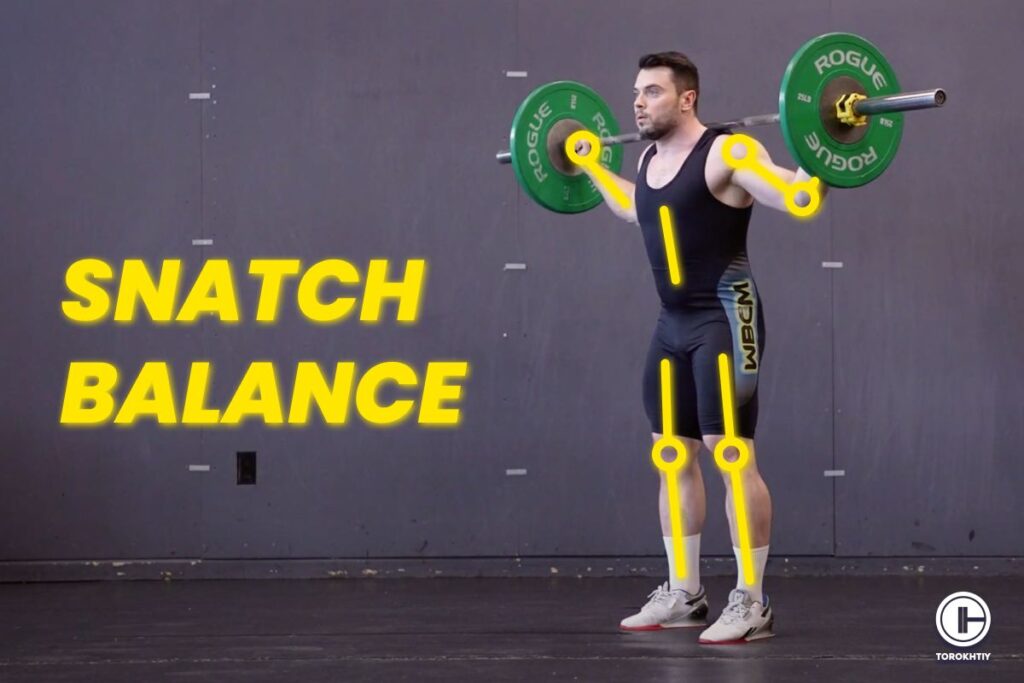
What Is the Snatch Balance?
In a nutshell, it’s a full-body exercise where you go from a standing position with the bar resting on your back just like in the back squat with the snatch grip width, to a fully extended overhead squat in one fluid motion.
We know – it sounds complex. And it is, without proper guidance. But there are a lot of benefits to it and if you take the time to master it, you’ll love yourself for it.
It’s a very dynamic exercise that challenges your ability to stabilize and control the weight over your head and its main purpose is to improve your snatch technique and lifting performance in general.
How to Do the Snatch Balance?
You’ll need focus, attention to detail and, of course, form. Every good lift starts with proper form because that’s how you stay safe and, after all, that’s why the lift is effective.
1. Setup
Your feet should be shoulder-width apart so you get a stable stance for the exercise. The bar should be resting across your shoulders behind your neck, like you’re getting ready to do a back squat.
Your hands should be wide enough for the bar to rest in the hip crease with extended arms, which is wider than shoulder-width.
2. Dip
Bend your hips and knees a little. Your chest should be up and the core engaged. If you’ve ever done a push press, this dip is kind of like the initial movement of that.
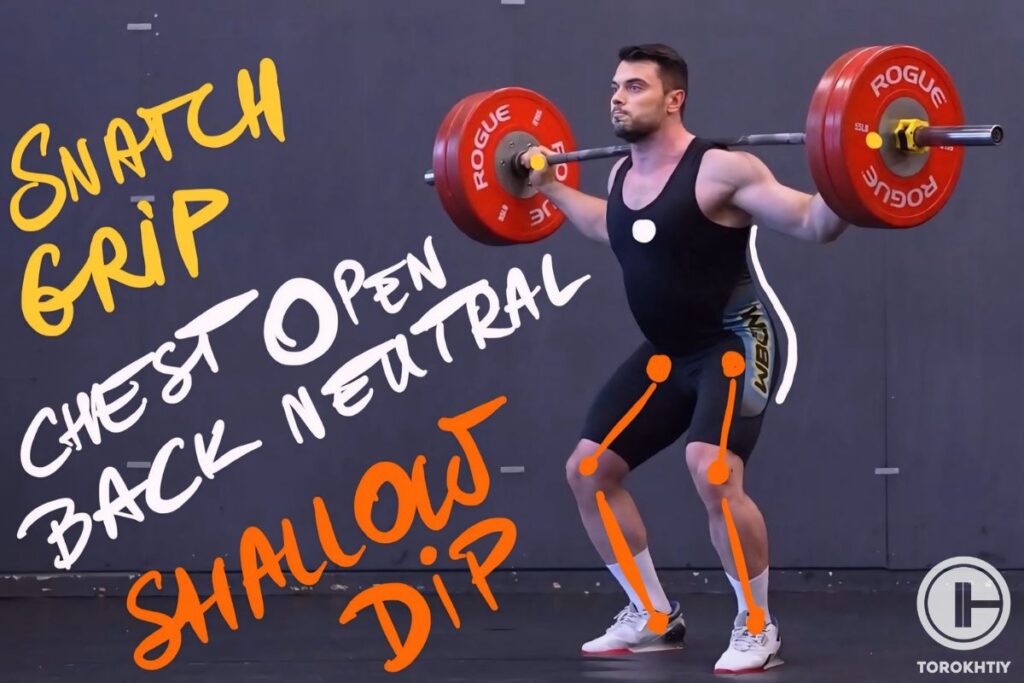
3. Drive
Extend your knees and hips quickly to push the bar up. This will give you momentum to “unload the bar” and kind of pause it in the air however the goal is to not elevate the bar more than necessary – you need to drop under the bar not press it above your head.
You need to keep your torso upright throughout the drive so the bar path stays vertical and balanced.
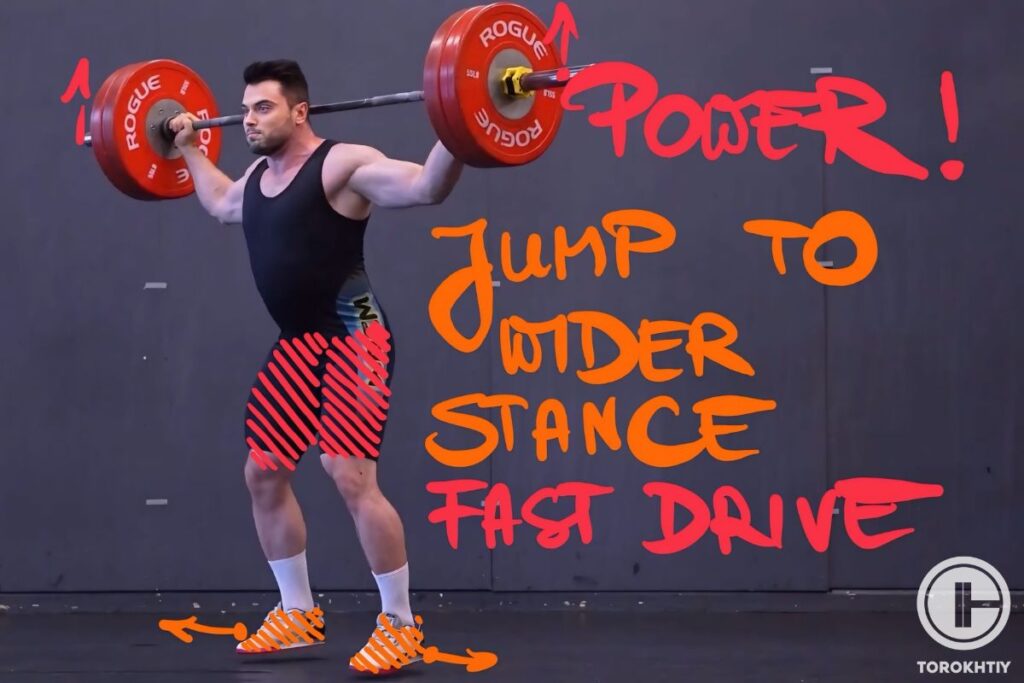
4. Drop Under the Bar
Quickly drop under the bar as it starts to rise and punch your hands up into the barbell. This phase is critical because you’ll need a lot of speed and precision. Dip and drive can be slower but drop needs to be fast.
Your feet need to move out a little to your snatch receiving position (wider than shoulder-width) so you get a stable base for the catch.
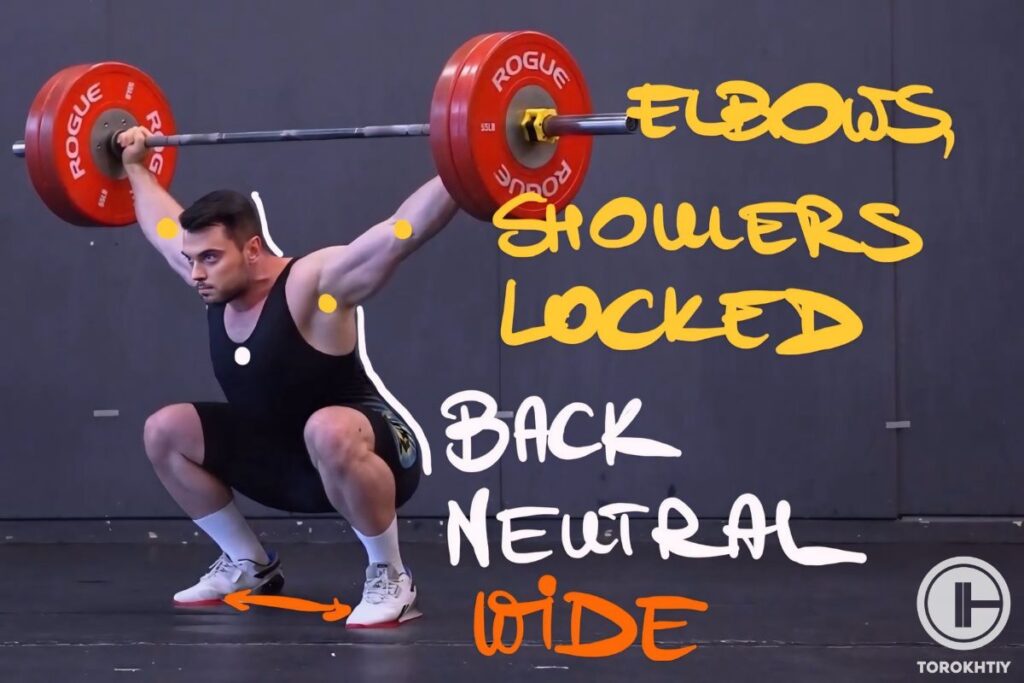
5. Catch the Bar
Extend your arms completely to lock out the bar overhead as you drop into a deep squat position. Make sure your elbows are pointing out and that your shoulders are active.
Use your legs and core to absorb the impact and concentrate on catching the bar with stability and control.
6. Stand Up
When you secure the bar over your head, stand up from the squat – engage your core, drive through the heels.
You should now be totally upright and the barbell should be locked out overhead.
7. Reset
All that’s left to do now is to lower the barbell back to your traps and get ready for the next rep. Reset your feet to the starting position if they’ve shifted.
Save it for easy access!
Bookmark this page now to access the program and instructional videos anytime, anywhere.
Stop wasting time searching during your gym sessions.
A Simple Snatch Balance Program
If you want to include the snatch balance into your routine – good for you! But keep in mind that how you do that depends on how experienced you are.
| Level | Reps | Sets | Frequency |
|---|---|---|---|
| Beginner | 3-5 | 3 | 2 times per week |
| Intermediate | 3-4 | 4 | 2-3 times per week |
| Advanced | 2-3 | 5 | 3 times per week |
Beginner
- Reps: 3-5
- Sets: 3 sets
- Frequency: 2 times per week
- Progression: Use either an empty bar or super light weights because your priority is learning the form. Before you increase the weight, you need to be able to do each and every rep with proper form. Once you’re able to do that, you can increase the weight in 5-10 lbs increments. Be sure that you already can do overhead squat with same weight.
Include exercises for shoulder and hip mobility in your warm-up to work on your flexibility and range of motion.
Intermediate
- Reps: 3-4
- Sets: 4 sets
- Frequency: 2-3 times per week
- Progression: Use weights that are challenging but that still allow you to do the exercise with proper form. Focus on the speed of the drop under the bar and the precision of the catch. Keep increasing the weight as your technique improves and include snatch balance into your snatch training to directly improve the snatch technique.
Advanced
- Reps: 2-3
- Sets: 5 sets
- Frequency: 3 times per week
- Progression: You want heavy weights that are close to your snatch max so that you can really put your stability and strength to the test. Keep refining your technique and focus on timing and precision of the drop and the catch.
Make sure to allow yourself enough time to recover and be mindful of how fatigued you are, especially if you’re doing high-intensity lifts.
Follow us!

Free!
Get a 2-week Weightlifting Program as a bonus for the subscription to kickstart your training plan!

Free!
4 Common Snatch Balance Mistakes
You shouldn’t obsess over avoiding making mistakes because everyone makes them, even those pros you idolize and hope to become like. They’re part of the learning experience but that doesn’t mean you should not care whether you make them or not.
Here are some of the most common mistakes people make when it comes to the snatch balance.
❌ Poor Setup
If you start off incorrectly, there’s little to no chance the lift will go well. Before you start, double-check your setup to make sure your stance, grip, and the bar position are all on point.
❌ Insufficient and too fast dip
When you don’t dip your knees the way you’re supposed to, you limit that explosive power you need to drive the bar up. A shallow dip means a less effective lift, so make sure to do a deep, controlled knee bend during the dip phase. Additionally to fast dip won’t let you control the bar properly and will often result in a missed lift
❌ Lack of Speed in the Drop
The snatch balance needs a quick, precise drop under the bar. When that doesn’t happen, you can lose your balance or miss the catch.
Focus on explosiveness and practice the drop phase with lighter weights or a PVC pipe to learn how to do it.
❌ Rushing the Stand Up
You’ll end up compromising your balance and control if you stand up too fast after you catch the bar. Make sure the bar is stable overhead before you complete the lift. Own the position!
Once you catch the bar, take a moment to stabilize, engage your core and legs, and then stand up.
4 Benefits of Snatch Balance
There are a lot of benefits to the snatch balance, especially for athletes and lifters. Here are some of them:
✅ Better Overhead Stability
The snatch balance does a fantastic job at targeting the muscles that are responsible for stabilizing the bar overhead. It will strengthen your shoulders, traps, and upper back and it will be easier for you to control and stabilize heavy weights in this position.
It does an excellent job at facilitating heavier snatch!
✅ Improved Balance & Footwork
Even if you’ve never tried it, it’s obvious that you’ll fail miserably at the snatch balance if your footwork isn’t precise and if your balance is off.
When you do this exercise on a regular basis, you’ll notice that it will improve both your footwork and balance over time.
Tips From the Champ
As a coach, I always tell my athletes: mastering the snatch balance is your ticket to a rock-solid overhead position. Prioritize this drill early on – it’s the key to feeling secure and stable when you catch heavy weight in the full snatch.
Olympic Weightlifting Champion
✅ Stronger Core
Do you know what keeps you from wobbling and falling over when you lift that bar over your head in a squat position? That’s right, it’s your core!
The snatch balance challenges your core to keep you stable so in time, it will make it stronger.
✅ Better Shoulder Mobility
You’ll need a good range of motion in your shoulders to get a proper overhead position. This means that the snatch balance can actually improve the mobility in your shoulders if you prepare yourself properly for it and then practice it enough..
2 Snatch Balance Variations
What do you do if you get bored of the regular snatch balance? You give some variations a try, of course!
1. Heaving Snatch Balance
You do the same initial dip and drive as in the standard snatch balance, but you don’t move your feet – you keep them planted in the same position the entire time. Our tip: Start already in your regular Snatch Catching position and practice there.
2. Drop Snatch
What’s the difference between the drop snatch vs snatch balance? Well, this one focuses more on the speed and precision in dropping under the bar and it improves your speed and reaction time during the catch phase. It does it by missing the initial dip and drive.
You rest a barbell on your shoulders, then drop fast into a squat and at the same time, press the barbell over your head.
3 Snatch Balance Alternatives
Alternatives will give you the same benefits, but the exercises differ from the snatch balance more than variations do.
1. Overhead Squat
You probably saw this one coming, right? The overhead squat is a great alternative and it’s an excellent way to develop the stability and mobility you need for the snatch.
You hold the barbell over your head with arms extended completely and you do a deep squat.
2. Push Press
Dip your knees a little and then use your legs to help drive the bar up. The push press focuses on the dip and drive and lockout phases of the snatch balance, and it builds strength in your upper body.
3. Snatch Grip Press
Stand with your feet shoulder-width apart and hold the barbell on your traps like in the back squat but with a wide snatch grip. Lower into a deep squat with your back straight and core engaged. From here, press the bar up by fully extending your arms while still maintaining the squat .
Who Should Do the Snatch Balance?
Well, you saw the benefits – if you like what you see, you should give it a try. But apart from just the general population that wants to get in on the benefits, there are some people it’s particularly useful for.
1. Olympic Weightlifters
If you’re an Olympic weightlifter, you need to master the snatch because it’s one of the two competitive lifts. The snatch balance will help you refine the technique you need to catch the barbell securely in a deep squat and facilitate heavier snatch by improving and testing your overhead strength.
2. Powerlifters
Powerlifters focus more on the squat, bench press, and deadlift, but the snatch balance can improve their shoulder stability and upper body strength in general – both of which are great for bench press. Plus, better shoulder stability and mobility can help with lifting performance. Id also add variety to squatting allowing to avoid mileage with regular squats
3. People in Rehabilitation
If you have a shoulder or upper body injury, you can use the snatch balance as part of your rehabilitation program. Under the right supervision, of course! We don’t want you getting hurt even more and aggravating your injury.
It can help you rebuild strength and stability in your shoulders and upper body, so it will even reduce the risk of future injuries. There is absolutely nothing wrong with starting just with PVC pipe – beginners should start there anyway.
4. Athletes
Athletes that need a lot of explosive power (soccer, football and basketball players, for example) should give the snatch balance a try because it can make a world of difference for their explosive power, speed and coordination and balance. This means better performance in jumping, sprinting, and quick changes in direction.
Muscles Worked by the Snatch Balance
There are many different muscles involved in the snatch balance. Your shoulders are the main focus, but your upper back and traps get a good workout, too, because they help keep the bar steady.
Your core keeps you stable, and your legs are engaged during the dip, drive, and catch phases.
Calling it a full-body workout isn’t an overstatement and this exercise can help you develop a well-rounded, strong body.
Conclusion
Mastering the snatch balance isn’t easy, but nothing good ever is. The benefits are worth it, though. If you take the time to master the form, you’ll love the results. Make sure to warm up before your workout, cool down after and don’t push yourself too far past your limits. It’s good to challenge yourself, but real progress comes with time and patience.
Everything should be covered, but there’s always a chance we missed something so, if you have anything to add, you’re more than welcome to!
If not, then just share your thoughts and experiences – have you tried the snatch balance? If you have, what are you expecting to get from it? Did it take you long to become good at it? If you’re a beginner, what’s the most challenging aspect of this exercise?
Stay snatched and keep working!
References:
- Health Promotion Board (HPB) “Prevent Injuries with Proper Form During Workouts,” Singapore University Health Center, https://www.nus.edu.sg/uhc/articles/details/prevent-injuries-with-proper-form-during-workouts (accessed June 19th, 2024)
- Hyoung-Kil Park, Min-Kyung Jung, Eunkyung Park, Chang-Young Lee, Yong-Seok Jee, Denny Eun, Jun-Youl Cha, and Jaehyun Yoo. “The effect of warm-ups with stretching on the isokinetic moments of collegiate men.” Journal of Exercise Rehabilitation 14, no. 1 (2018): 78–82.
- Mary Altepeter, Jonathan Mike “Snatch Balance Technique,” School of Health Sciences, Lindenwood University, https://www.researchgate.net/profile/Jonathan-Mike/publication/318165882_Snatch_Balance_Technique/links/59e117cb0f7e9b97fbe2b439/Snatch-Balance-Technique.pdf (accessed June 19th, 2024)
- Mayo Clinic Staff, “Weight training: Do’s and don’ts of proper technique,” Mayo Clinic, https://www.mayoclinic.org/healthy-lifestyle/fitness/in-depth/weight-training/art-20045842 (accessed June 19th, 2024)
- Stacey Carter “Why it’s important to cool down after exercise, according to the science,” LiveScience, https://www.livescience.com/why-its-important-to-cool-down-after-exercise-according-to-the-science (accessed June 19th, 2024)
- Photos by Torokhtiy Media Team.
Why Trust Us?
With over 20 years in Olympic weightlifting, strength training, nutrition coaching, and general fitness our team does its best to provide the audience with ultimate support and meet the needs and requirements of advanced athletes and professional lifters, as well as people who strive to open new opportunities and develop their physical capabilities with us.
By trusting the recommendations of our certified experts in coaching, nutrition, and sports training programming, as well as scientific consultants, and physiotherapists, we provide you with thorough, well-considered, and scientifically proven content. All the information given in the articles concerning workout programming, separate exercises, and athletic performance, in general, is based on verified data.
The product testing process is described in more detail here.
Author: Oleksiy Torokhtiy
Olympic Weightlifting Champion
Best Results: Snatch – 200 kg,
C&J – 240 kg
Oleksiy Torokhtiy is a professional athlete boasting 20 years of experience in Olympic weightlifting. With multiple European and World titles under his belt, he has showcased his prowess in two Olympic Games (Beijing 2008 and London 2012). Upon concluding his illustrious career, Oleksiy dedicated himself to coaching. By 2022, he had conducted over 200 weightlifting seminars worldwide. He is the visionary behind an international sportswear and accessories brand known for its motto, “Warm Body Cold Mind.” Additionally, he is an esteemed author and the creator of a series of training programs and eBooks.




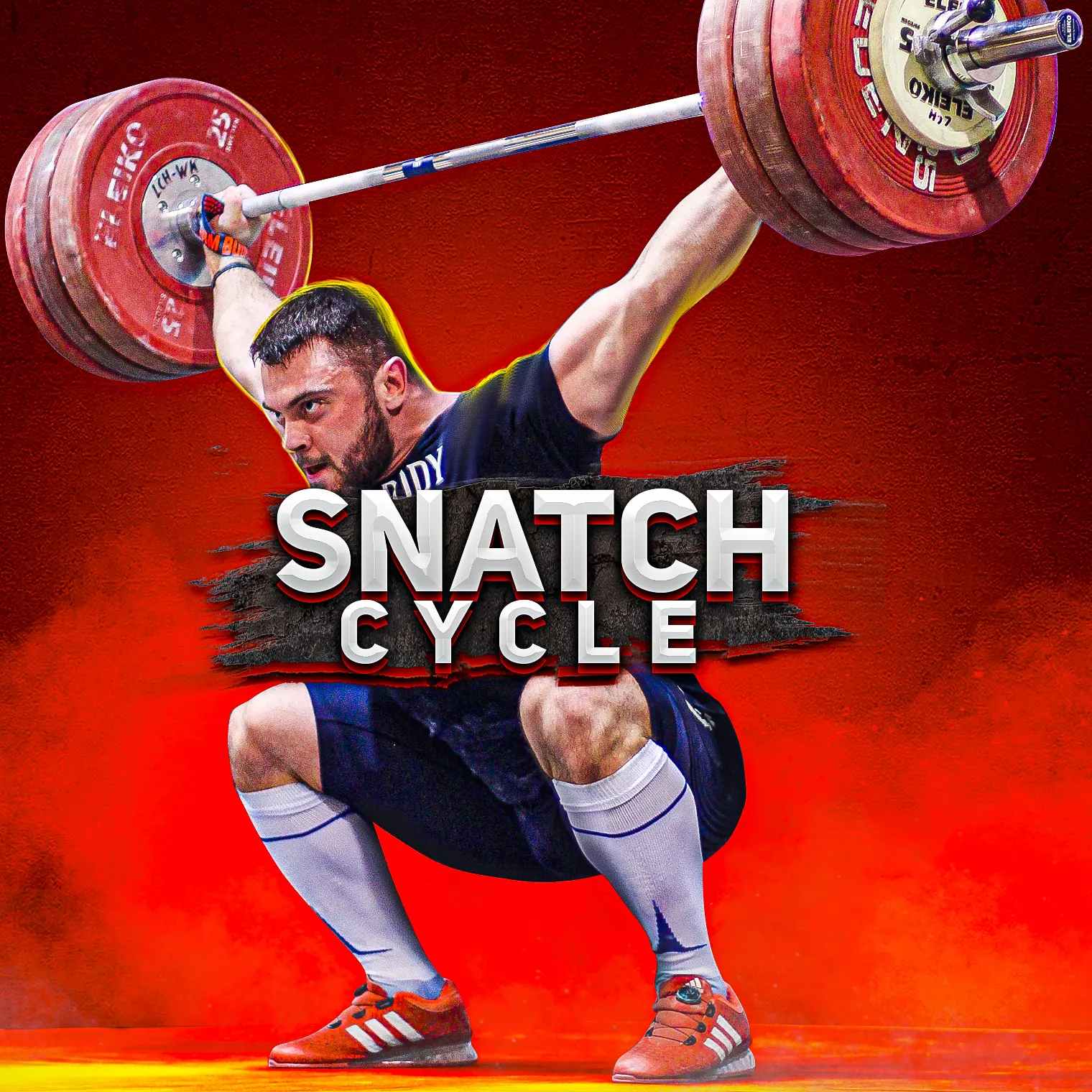
Still have questions after reading our article? Unlock your full potential by engaging with our experts and community! Don’t hesitate — leave a comment below and Oleksiy Torokhtiy will provide a personalized answer and insights to help you reach your goals.